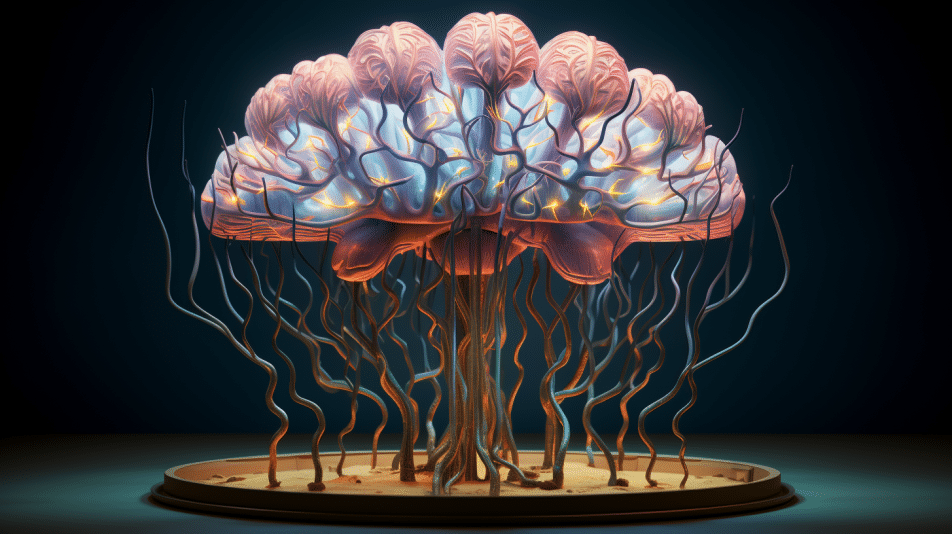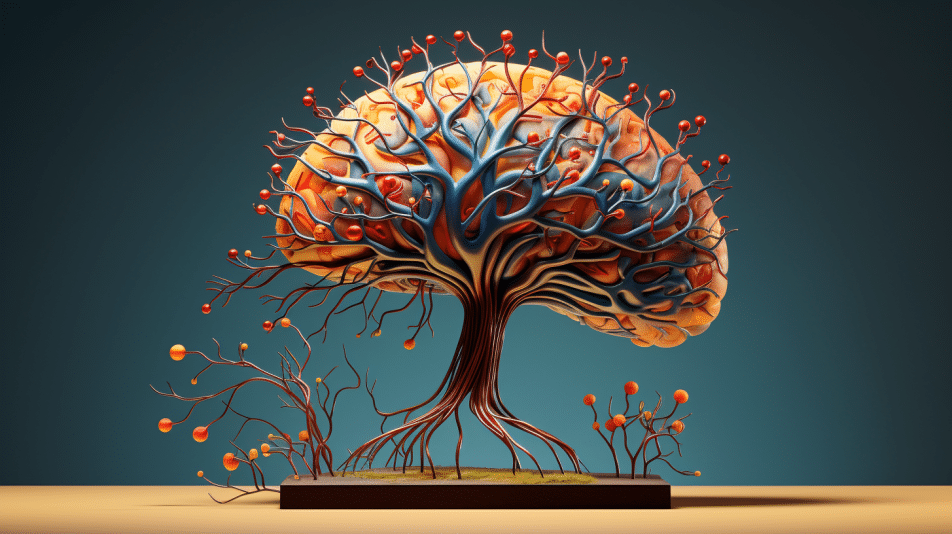Researchers have discovered that changes in a region deep in the brain called the brainstem may contribute to recurring major depressive disorder (MDD).
Key findings include:
- Patients with first-episode and recurrent depression showed volume decreases in brainstem regions like the pons and midbrain compared to healthy individuals.
- A region called the superior cerebellar peduncle (SCP) was smaller in patients with recurrent depression versus first-episode patients and healthy controls.
- SCP volume was negatively associated with number of depressive episodes and illness duration.
These results suggest brainstem abnormalities, particularly in the SCP, may represent an important neurobiological marker for recurring depression.
Source: BMC Psychiatry 2023
The Brainstem and Depression
The brainstem is a structure located at the base of the brain that connects to the spinal cord. It helps regulate basic functions like breathing, sleeping, and consciousness.
The brainstem also contains centers that produce key neurotransmitters implicated in depression, like serotonin, dopamine and norepinephrine.
Prior research has linked brainstem abnormalities to depression. For example, imaging studies have found altered activity and blood flow in the brainstem of depressed patients.
Post-mortem examinations have revealed fewer serotonin-producing neurons in the brainstem’s raphe nuclei in people with mood disorders.
But few studies have specifically looked at how brainstem structure may differ in recurring versus first-episode depression.
Understanding these changes could provide insight into why some people experience isolated depressive episodes while others have a recurring course.
Examining Brainstem Volumes in Depression
In this new study, researchers at Zhejiang University School of Medicine used MRI scans to measure and compare brainstem volumes in 61 patients with major depression (36 first-episode, 25 recurrent) and 50 healthy controls.

They utilized an automated segmentation technique to separately assess the volumes of 4 brainstem sub-regions:
- Midbrain
- Pons
- Medulla oblongata
- Superior cerebellar peduncle (SCP)
Key Differences Found Between Groups
The analysis revealed significant volumetric differences between the patient groups and controls in several brainstem areas:
Pons and Midbrain:
- Both first-episode and recurrent depression patients showed volume reductions in the midbrain and pons compared to healthy individuals.
Superior Cerebellar Peduncle (SCP):
- Patients with recurrent depression had smaller SCP volumes than both first-episode patients and controls.
- SCP volumes were negatively correlated with illness duration and number of depressive episodes.
Overall Brainstem Volume:
- Both patient groups exhibited lower whole brainstem volumes versus controls.
These findings suggest brainstem abnormalities may represent an important neurobiological feature of major depression.
The SCP changes seem to be specifically linked to recurring episodes of illness.
The Brainstem and Neurotransmitters
Why might brainstem volumes be reduced in depressed patients?
The midbrain and pons contain neurotransmitter-producing centers that are thought to play a key role in depression.
For example, the ventral tegmental area (VTA) of the midbrain produces dopamine, while the dorsal raphe nucleus (DRN) in the pons produces serotonin.
Dysfunction in these monoamine neurotransmitter systems is believed to contribute to depression symptoms.
So volume loss in the midbrain and pons may reflect impaired functioning of serotonin, dopamine and other monoamines that help regulate mood and motivation.
Treatments that target these neurotransmitter systems, like SSRIs, could potentially help normalize brainstem structure.
The SCP and Recurring Depression
What about the SCP changes seen with recurring depression?
The SCP helps connect the cerebellum in the hindbrain to various cortical regions involved in cognition and emotion.
Prior research has linked SCP white matter abnormalities to both cognitive and affective dysregulation in mood disorders.
Disruptions in this circuit may contribute to recurrence by impacting emotion processing and mood regulation networks.
SCP volume loss could also reflect impaired connections to limbic regions like the amygdala and prefrontal cortex.
These areas are important for controlling emotional responses and show altered connectivity in recurring depression.
Overall, SCP atrophy may disrupt communication between emotion regulation centers, making depression more likely to return after recovery.
More studies are needed to confirm the SCP’s role as a biomarker of recurrence.
Limitations and Future Directions
While promising, this study had several limitations to consider:
- It was cross-sectional, so the causal relationship between brainstem changes and depression cannot be confirmed.
- Specific structural alterations in monoamine-producing nuclei could not be pinpointed.
- Participants were adults under age 45 so findings may not generalize to other age groups.
- Effects of medication use on brainstem volume could not be entirely ruled out.
To build on these results, future longitudinal studies should track brainstem changes over time in relation to depression onset, relapse, and remission.
Exploring volume differences in specific nuclei could also help elucidate the precise structural underpinnings of recurrence.
Multimodal imaging approaches that combine MRI with PET and MRS scans may further illuminate how neurochemical and metabolic alterations within the brainstem contribute to depression vulnerability and recurrence.
What to takeaway from this brainstem & depression research…
In summary, this research found evidence that brainstem abnormalities may play an important role in major depressive disorder, particularly recurring episodes of illness.
Volume reductions in the midbrain, pons and SCP point to dysregulation in mood-related neurotransmitter systems that may drive recurrence risk.
The SCP specifically seems to represent an intriguing neurobiological marker of recurrence.
These findings advance our understanding of the neural mechanisms underlying recurrent depression.
With further study, brainstem imaging markers could potentially be used to predict recurrence risk and tailor more personalized, neurobiology-based treatment approaches.
References
- Study: Alterations of brainstem volume in patients with first-episode and recurrent major depressive disorder
- Authors: Chen et al. (2023)







